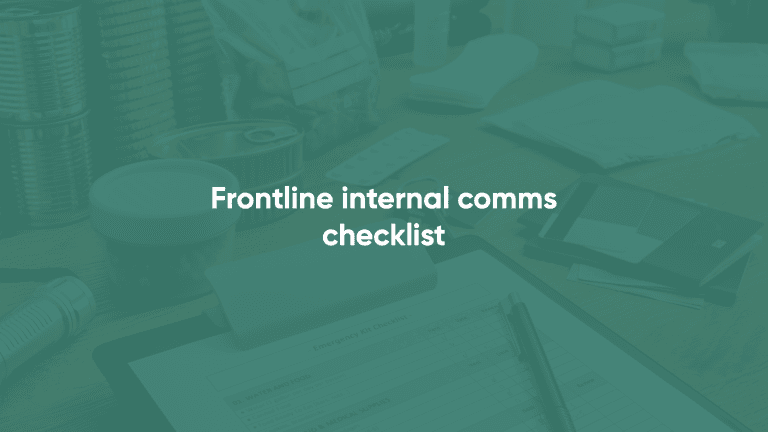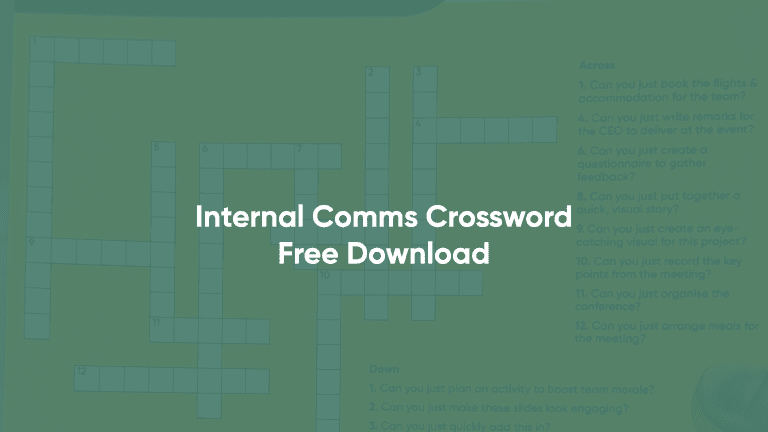
Effective internal communication is the foundation for the success of any business.
Yet, communication isn’t just about conveying information; it’s about ensuring that every frontline team member understands, engages with, and acts upon it.
Many different learning styles, preferences, and communication needs exist within any workforce.
Understanding your employees’ learning styles, communication preferences, and personalities makes building an effective comms strategy much more manageable. One that ensures your messages resonate with your frontline teams every time.
So, let’s examine the importance of accommodating different learning styles in internal communications teams.
Understanding the holistic approach to internal communications

Before we discuss the different ways to accommodate different learning styles in internal comms, it’s important to explain why incorporating various learning preferences in your strategy is essential.
At its core, internal communication is more than just transmitting messages from point A to point B. It’s about creating an entire culture of transparency, collaboration, and alignment within the organisation.
It’s about looking beyond the digital methods such as emails, intranets and internal comms apps. These are all essential for effective internal comms, but also to remember the importance of human psychology and how it plays a massive role in how people ingest and retain information. Below are different examples of what affects an employee’s ability to learn and communicate;
Cognitive preferences affect learning
Learning styles are often associated with cognitive preferences, such as how employees prefer to perceive, process, and organise information. For example, some staff members may be more visual learners, preferring to learn through images, diagrams, or spatial representations. In contrast, others may be auditory learners, preferring to learn through listening or verbal explanations. These preferences can be linked to differences in cognitive processing styles, which are influenced by psychological factors like personality traits and mental abilities.
Personality traits play an important role
Psychological theories such as the Myers-Briggs Type Indicator (MBTI) suggest that personality traits influence learning styles. For instance, more extroverted employees may prefer group learning environments or discussions, while those who are shy may choose to learn and read communications alone. They may also enjoy more reflective activities.
Motivation and emotion should be considered
Motivational and emotional factors can also influence learning styles. For example, employees highly motivated by external rewards may prefer learning tasks that offer tangible rewards or recognition. In contrast, more intrinsically motivated people may prefer functions that align with their interests or values. Emotions such as anxiety or confidence can also impact learning styles, affecting preferences for specific learning environments or approaches.
Now that we understand why it’s essential to consider different learning styles let’s examine how you can accommodate them to improve your comms strategy.
Expanding communication methods to accommodate different learning styles

1. Understanding your employee’s preferences
The first step is acknowledging and understanding your employees’ learning preferences. Some employees thrive on written communication, preferring emails or intranet messages, while others excel in face-to-face interactions. Ask them if you can do this via a questionnaire or in person, or do whatever you find most accessible.
2. Use varied communication channels
Each communication channel serves a unique purpose and audience. Formal emails ensure clarity and documentation, while town hall meetings encourage collaboration and discussion. Informal platforms like WhatsApp groups create an avenue for quick updates and informal exchanges, contributing to a vibrant organisational culture.
Our customers like to use Ocasta for strictly business communications and Yammer (Viva Engage) or Workplace for more social communications. When you mix business and social comms, things can get messy, and essential business updates get lost in the noise. This contributes to a frustrating and confusing employee experience, a disaster for any communications strategy.
3. Encouraging human and collaborative communication
Establishing ways to interact in person for comms can be hugely beneficial. Weekly huddles, town hall meetings or 1:1 meetings create a culture of open dialogue and collaboration. Employees feel empowered to voice their opinions and ideas, leading to a more engaged workforce.
They are also better for employees who prefer communicating in person rather than reading information on a screen. Melanie from Budie (a coaching and consulting firm) pointed out in the State of Frontline Comms 2024 report, “Another challenge is trying to be more innovative instead of just bombarding people with emails. It’s crucial not to depend too much on email.”
Melanie also mentioned that frontline teams need time with team leaders who can interact with them.
4. Use a variety of different methods for one key message
In the state of frontline comms report, Melanie also shared that the Friday “Huddle” doesn’t include slides and lasts 30 minutes. She also highlighted that she sends an email about the topic to help frontline employees become more familiar. By doing this, you can accommodate multiple learning preferences in one go.
5. Retrain employees on how to use specific comms tools
Retaining employees to use communication tools is essential because daily work routines can make them forget how to use them effectively. This lack of proficiency hinders their engagement with the tools. Regular training sessions can reignite their interest and show them how using the tools can benefit their work life and career growth. Make sure to communicate the value they’ll gain from the training, focusing on how it will help them personally.
Ideas to diversify your internal comms
For visual learners
-
Create an infographic or visual presentation summarising vital points.
-
Use charts, graphs, or diagrams to illustrate complex information.
-
Incorporate images or videos to enhance understanding.
For learners who like to listen
-
Record a podcast or audio briefing discussing the content.
-
Conduct a webinar or virtual meeting where information is presented verbally.
-
Provide audio recordings of training sessions or important announcements.
For kinesthetic learners
-
Organise hands-on workshops or training sessions where employees can interact with the material.
-
Encourage role-playing activities or simulations to reinforce learning.
-
Provide physical resources or materials for employees to manipulate, such as prototypes or models.
Reading/writing learners
-
Distribute written documents, such as memos, reports, or manuals.
-
Create detailed written instructions or guides for reference.
-
Encourage employees to take notes during presentations or training sessions.
Social learners
-
Facilitate group discussions or collaborative projects related to the content.
-
Encourage peer-to-peer learning through mentoring or coaching programs.
-
Use social media or online forums to foster community engagement and knowledge sharing.
Accommodating different learning styles in internal comms teams is not just a best practice. It’s necessary to drive effective communication and build a culture of transparency, collaboration, and continuous learning within your business.
Businesses can thrive by adopting a holistic approach, leveraging diverse communication channels, and encouraging interactive participation. As your business evolves, so must your internal communication practices, ensuring every team member feels informed, engaged, and empowered to contribute to the organisation’s success.
Want to improve your frontline comms strategy? Download the 2024 state of frontline comms report
Get helpful insights from communication experts who offer a new perspective, engaging strategies, and best practices for improving your frontline comms. Follow their actionable tips and transform your internal comms strategy.





